1. Introduction
Under the background of promoting urban renewal and improving the living environment, all regions are vigorously implementing the renovation of old urban communities. With the rapid growth of the number of private cars owned by urban residents, the problem of parking in old residential areas has become increasingly prominent. Solving the parking problem of residents has become a key task in the renovation of old communities. It is important to discuss parking problems in old urban areas and their governance strategies.
This paper takes T Community, a typical old community in the main urban area of Nanjing as an example, and comprehensively uses various methods such as on-site investigation, questionnaires and interviews to understand the parking status of the community and analyze the parking needs of residents. The parking problem management strategies are put forward. Furthermore, the content of parking problems in old urban areas can be enriched and expanded.
2. Materials and Data Collection
2.1. Study Object
T Community is located in Qinhuai District, Nanjing, near the intersection of Huzhu South Road and Hanzhong Road. It was built in 1989 and is a typical old community in the main urban area. The community is dominated by seven-story residences with a high population density. According to the docking with the property management company and the field research, there are 824 households and about 200 private cars. Luolang Road on the east side of the community, Tangzi Street on the south side, Hanximen Street on the west side and Taoliwang Lane on the north side are all urban branch roads. There are entrances and exits on the south, west and north sides of the community. The structure is clearer. There are various facilities around the community, such as Hanzhongmen Citizen Square, Hanzhongmen Station of Metro Line 2, Sheraton Kingsley Hotel, Ping An Financial Center, Jiangsu Provincial Hospital of Traditional Chinese Medicine, etc.
2.2. Data Collection
In 2021, the author went to T Community several times to carry out field research, and comprehensively use field surveys, questionnaires and interviews to collect data. In order to investigate and understand the parking situation and existing problems in T Community , this study conducted a questionnaire survey and interviews to analyze the parking needs of residents. Among them, this study distributed 100 questionnaires to car owners in the community, and recovered 85 valid questionnaires, with an effective rate of 85%. In addition, this study also conducted more in-depth interviews with more than 10 community residents.
3. Current Situation and Problems of Parking
3.1. Current Status of Parking
According to the survey, most residents of T Community park their cars in the community, either on the roadside or in the parking lot in the community (Figure 1). A total of about 50 parking spaces have been allocated in the community, and the areas that have not been allocated parking spaces are also full of vehicles. There is a parking lot for 15 cars in the southwest corner of the community. In addition, some residents park their vehicles outside the community, such as in the parking lots on Tangzi Street and Nanwei Lane parking lot around the community, as well as on both sides of urban roads.
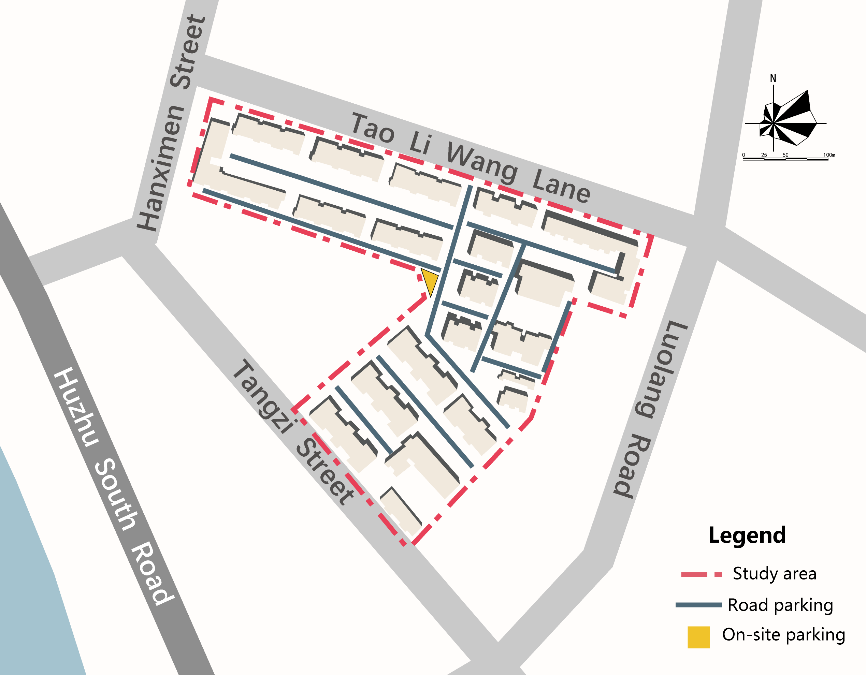
Figure 1: The current status of parking methods in the community.
3.2. Analysis of Parking Problems
3.2.1. Encroaching on Public Space.
In the T Community, the vehicles parked inside the berth and the "pins and needles" parked outside the berth have almost filled all kinds of public spaces. Because the old community was constructed earlier, livability and motor vehicle parking were not considered at the same time, and it was difficult to realize basic measures such as diversion of people and vehicles [1]. Due to the discrepancy between the number of private cars and the number of parking spaces in the community, about half of the vehicles in the community are actually parked outside the parking spaces. Some of these vehicles are parked under the eaves, and some are parked in front of the corridor, occupying a large number of public spaces such as the space in front of the house and the pedestrian space that originally belonged to the residents of the community, causing inconvenience to the life and passage of the residents, and affecting the living experience. It also hampers the community landscape (Figure 2).

Figure 2: Community vehicles encroach on public space.
3.2.2. Security Risks
The roads in T Community are already relatively narrow. In addition, roadside parking has encroached on the road, resulting in poor traffic flow. In many areas, only one car can barely pass through, which makes it very difficult for vehicles and prone to accidents. Because the fire exits in the community are occupied by parked vehicles, it is often difficult for fire trucks to approach the burning building when a fire occurs, which affects the efficiency of fires. If the fire spreads, the consequences are very serious. In addition, the mixed traffic of people and vehicles in the community also brings certain safety hazards to pedestrians.
3.2.3. Unreasonable Management
T Community is currently a street-managed property, and the staff are lacking in professionalism. Firstly, the space in the community is limited, and the planning of some parking spaces is not scientific, resulting in some low-floor residents often suffering from motor vehicle exhaust and pollution. Affected by noise, there are many inconveniences and hardships in daily life. Then, although some residents have applied to rent fixed parking spaces in the community, due to leaving early and returning late, their parking spaces are sometimes occupied by other vehicles and cannot be handled on time, resulting in conflicts between residents and the property. Thus, it can be seen that there is still room for improvement in the parking management of residential properties.
4. Analysis of Survey Results about the Party Situation
4.1. Analysis of Parking Supply and Demand
As an old residential area, T Community has a large contradiction between parking supply and demand, and residents' parking needs have not been fully met. At present, there are about 200 private cars owned by the residents, but there are only more than 60 parking spaces in the community. Even if the parking spaces outside the parking spaces are "seeing and inserting needles", they can only accommodate about 115 cars. In the interview with the car owners in the community, car owner A said: "Having lived in the community for more than 20 years, there are 2 cars at home, but only one parking space, which is a big problem; car owner B said: "There is no application for parking. I can only find a place to park outside the community”; owner C said: “There are parking spaces, but the roads in the community are narrow, and there are vehicles parked on the side of the road. Driving from the gate of the community to your own parking space is a test of skill. It also takes a long time, and sometimes you need to contact other owners to move the car to park it.” It can be seen that the parking facilities in T Community cannot meet the needs of residents, thus affecting the residents' willingness to buy a car. The parking problem that continues to spread may evolve into a social problem involving fairness and economy [2]. In the future, it is necessary to not only optimize the parking facilities inside the community, but also actively integrate the parking resources around the community.
4.2. Analysis of Parking Location and its Influencing Factors
T Community was built in the late 1980s. As an old residential area, the building density is relatively high, so the underground garage cannot be excavated, and residents can only park on the ground. In terms of specific parking locations, 65% of residents choose to park in the community, of which 57% park on the roadside in the community, and 8% in the parking lot in the community. Due to the limited parking space in the community, there are other 35% of residents choose to park outside the community, of which 21% park their vehicles on the side of the road outside the community, and 14% park their cars in the parking lot around the community (Figure 3).
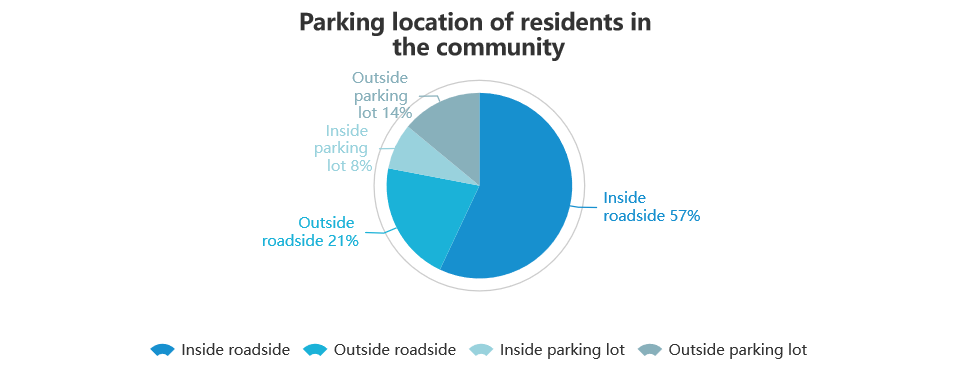
Figure 3: Parking location of residents in the community.
Some factors, including the number of vacant parking spaces, the age and gender of the driver, and the ease of use of the parking lot, also have a certain influence on people's choice of parking methods [3]. But in old urban communities, the influencing factors will be different. According to the survey, walking distance, safety considerations, and shielding protection are the three most important factors influencing community residents when choosing a parking location (Figure 4). 52% of the surveyed residents first consider the walking distance when choosing a parking location, hoping that the parking location is close to home. In the observation of the parking situation in the community, the author found that there are denser vehicles on the roadside between residential buildings, while there are relatively few vehicles parked far from the unit door, and sometimes there are even spare parking spaces at night. According to the survey, only 9% of the residents are willing to walk home more than 150 meters after parking, and the walking distance that people are willing to accept is generally less than 150 meters. In addition, the walking distance that an individual is willing to accept will also be affected by factors such as physical condition and weather changes.
27% of the residents surveyed considered safety to be very important when choosing a parking location. According to the research of environmental psychology, when people park their vehicles, they tend to find a safer place to park for psychological reasons, such as on both sides of a residential road or under street lights, so that they can observe the vehicle at home and reduce the possibility of vehicle theft [4]. Places with better conditions can be covered by monitoring equipment to reduce the possibility of vehicle damage or theft and ensure vehicle safety.
Another 14% of the interviewed residents paid more attention to the sheltering and protection conditions of the parking lot. These residents like to park their vehicles in shaded places with backlight, such as under the shade of trees, and use plants to block them. On the one hand, it can prevent direct sunlight from causing the temperature inside the car to be too high, and on the other hand, it also reduces vehicle damage caused by wind and sun.
The research is carried out based on the data results of the questionnaire survey, including the preferred parking location, the maximum walking distance that can be tolerated, the degree of consideration of parking safety issues, the degree of consideration of obstructions, etc. The survey was conducted in December 2021, with a total of 100 questionnaires distributed and 85 valid questionnaires recovered. The statistical results are shown in Figure 4.
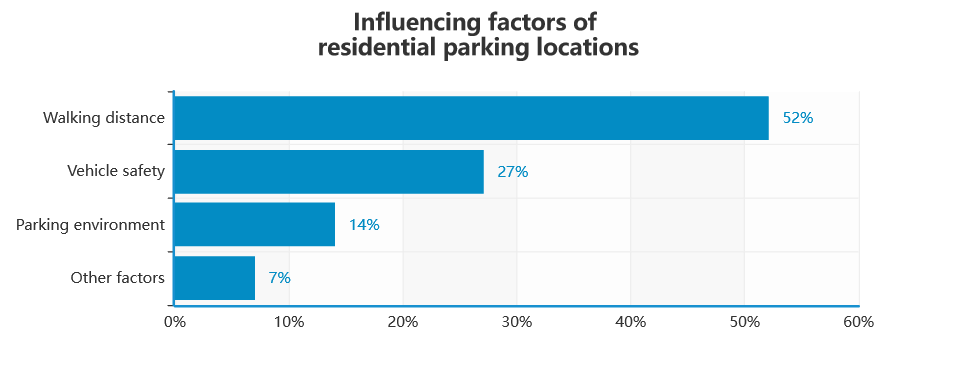
Figure 4: Influencing factors of residential parking locations.
In conclusion, the three most important factors affecting residents’ choice of parking methods in the community are walking distance, safety issues and occlusion issues, respectively. The issue of parking safety will be considered. Finally, after ensuring the safety of parking, the necessary shading of the plants in the vehicle utilization area will be considered.
4.3. Analysis of Parking Satisfaction
The author investigated the satisfaction of residents with the parking facilities and parking management in the community. The results are shown in Figure 5.

Figure 5: Residents' satisfaction with parking facilities and parking management.
Regarding the satisfaction with parking facilities, it can be seen that only 10% of the residents are satisfied with the parking facilities in the community, about half of the residents have a neutral attitude, and 34% of the residents have a negative view of the parking facilities in the community, of which 9% are very dissatisfied. Respondents said that many parking spaces planned by the property occupy sidewalks and activity venues, and some parking spaces are located in front of the windows on the first floor, blocking the line of sight, bringing inconvenience to life and causing conflicts between neighbors. As far as the parking management of the community is concerned, 16% of the residents are satisfied, nearly half of the residents feel it is average, 25% of the residents are dissatisfied, and 13% of the residents are very dissatisfied. Some residents reported that they paid the parking fee to the property once a year, but the property staff couldn’t keep an eye on them at all times, and their parking spaces were occupied by other vehicles from time to time, and sometimes they even had disputes with other residents because of parking.
Based on the feedback data, the residents of the community are generally not highly recognized for the parking management method and the status quo of the operation of parking facilities.
5. Governance Strategies for Parking Problems
5.1. Excavating the Parking Space Inside the Community
It is no longer possible to build a large parking lot in the T Community. The public space can be re-planned in combination with the "micro-renovation" of the old community. By implementing measures such as one-way traffic organization and renovation, the parking space and road resources of the community, as well as the scattered land in the community, can be used for parking space renovation. These measures widened local roads, freeing up space to add new parking spaces.
For example, between Buildings 39-43 and Buildings 45-49 in T Community, there is a large open space between houses. At present, there is a long flower bed. Due to poor maintenance, the quality of the landscape is poor. There are parallel parking spaces on the south side. On the premise of not affecting residents' travel and rest, and not occupying the fire passage, the space here can be transformed. The flower beds with poor landscape quality are demolished, and vertical parking spaces are set up at the original flower beds (Figure 6). Lay colored grass-planting bricks on the renovated parking lot. The grass-planting bricks can not only enhance the green landscape of the community, but also play the role of vacuuming and absorbing water, so as to realize the organic unity of parking facilities and greening configuration (Figure 7). When the parking space is idle, it can also be used as an activity venue for the residents of the community, achieving the compounding of various functions and improving the utilization rate of space.
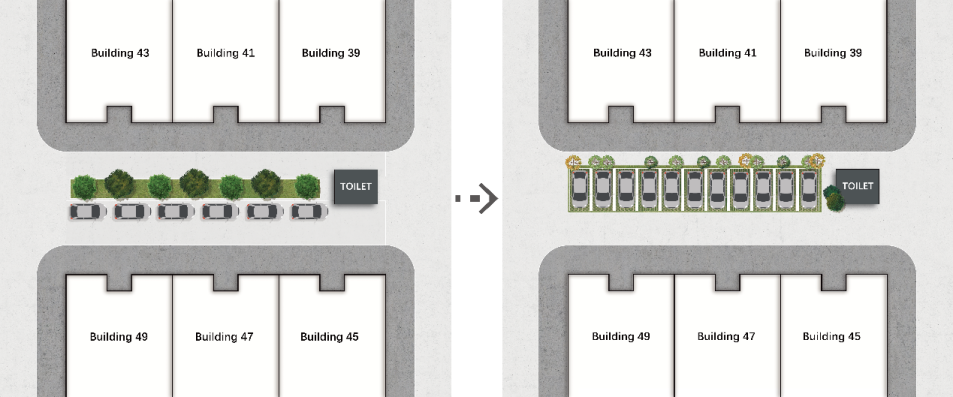
Figure 6: Schematic diagram of the renovation of the parking lot.

Figure 7: Effect drawing of the renovation of the parking lot.
5.2. Integrating Parking Resources Around the Community
The management method of "shared parking" is very effective for old communities where it is difficult to greatly expand the parking facilities [5]. According to the results of field research, the author has sorted out the parking lots that are open to the public and shared with community residents within 400 meters of T Community, such as the parking lots of Pingan Financial Center, No. 2 Tangzi Street, and Nanwei Lane, etc. (Figure 8). These parking lots can provide long-term rental spaces for the residents of the community, and the residents can rent them through the method of "grouping for a year". The parking lot gives residents a certain discount on the basis of the original charging standard, which not only improves the utilization rate of the social parking lot, but also improves the efficiency of the parking lot. Ease the parking pressure in the community. For example, the newly built Pingan Financial Center to the north of T Community is only 200 meters away from the community. There is a four-story underground garage, and the parking spaces are rented out to the society at a price of 1,000 yuan/month/piece. Due to the high price, it is more difficult to rent, and there are still more than 100 spare parking spaces for rent. In this context, the parking lot may wish to provide long-term car rental spaces to the residents of the community at a preferential price, and the residents can rent in groups to achieve mutual benefits between the social parking lot and the residents of the community.
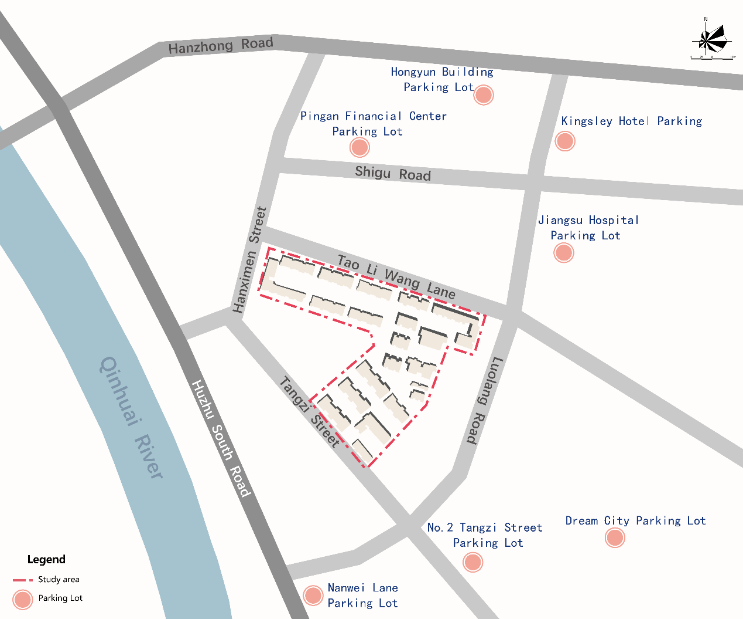
Figure 8: Social parking lot available around the community.
In addition, the Qinhuai District Center for Disease Control and Prevention, the Jiangsu Institute of Quality and Standardization and other units around T Community also have internal parking lots. On the premise of not affecting the unit's daytime parking and daily work, "night parking spaces" can be provided to residents of surrounding communities, and the parking time is limited from 9:00 pm to 7:00 am the next day, so as to revitalize the stock parking resources in the old city and achieve "alternate use."
5.3. Optimizing Management Measures of Community Parking
Studies have shown that the low cost of on-street parking fees and fines for illegal parking has become the main reason for disorderly parking in old communities [6]. On the one hand, the property should redesignate the standard and management system of parking charges for residents of the community based on the government's charging policy. The layout of parking spaces should be more scientific, minimize the disturbance to the daily life of the residents of the community, and set aside fire passages to reduce potential safety hazards. Neighborhood committees should regularly carry out publicity and education on parking regulations, and promptly deal with vehicles that are not parked in accordance with regulations and zombie cars that have not been used for a long time. In the case of limited parking spaces in the community, the property management company should first ensure that the owner's first car in the community can park, and then use the price lever to adjust for the owner's second car and the tenant's car. Considering that there are many elderly people in T Community, the family car for children who come to visit their parents can be parked for 2 hours free of charge, and a certain fee will be charged after 2 hours, so that the parking management of the community has both principles and temperature.
On the other hand, a smart parking system can be introduced to integrate the data of parking spaces in the community, on-street parking spaces outside the community, and social parking lots around the community to realize the sharing of various parking resources. When the car owner opens the smart parking APP, they can know whether there are any free parking spaces. If the parking spaces in the community are full, they can follow the navigation to the nearest roadside parking space or social parking lot. This will not only help car owners find a parking space faster, but also help improve the parking order in and around the community.
6. Conclusion
This study examines the current management system of the supply of parking facilities in old urban residential areas, and analyzes the needs of residents and their influencing factors in Nanjing, a case study of T Community. It can be concluded that, on the supply side, problems such as insufficient parking facilities, chaotic parking management, and uncivilized parking have yet to be resolved. The current situation of parking mainly includes three problems: vehicles encroaching on public spaces, potential safety hazards in parking passages, and disordered parking management. Some feasible solutions are proposed, including re-planning and redesign of the parking lot, innovation of the management system, and cooperation with third parties.
The limitation of this study is that it only studies an old urban community as a case, and data selection and social research cannot be comprehensive. In the future, research should pay attention to expanding the scope of sample selection to make the conclusions more accurate and comprehensive.
References
[1]. Tang Dawu, Duan Wen. Research on the Planning Strategy of "Senior Traffic Safety Zone" in Old Residential Areas [J]. Residential District, 2018(02):21-25.
[2]. Yu Hao, Liu Chaoping, Yang Ming. Policies and strategies for parking development in old districts in Nanjing's old city [J]. Urban Traffic, 2016, 14(04): 19-25. DOI: 10.13813/j.cn11-5141 /u.2016.0404.
[3]. Yin Huanhuan, Qin Huanmei, Guan Hongzhi. Investigation on parking in residential areas in Beijing[J].Urban Traffic, 2007, 5(6): 49-53.
[4]. Li Bin. Environmental behavior theory of environmental behavior and its extension [J]. Architectural Journal,2008(2): 30-33.
[5]. Zhang Ling. Research on the problem of parking difficulties in the city and its countermeasures [J]. Hebei Enterprise, 2006(08):11-12.
[6]. Lu Sugang. Exploration on Parking Remediation in Urban Core Areas - Taking Xining City as an Example [C]//. Innovation Drive and Smart Development - Proceedings of the 2018 China Urban Transport Planning Annual Conference. 2018:2372-2384.
Cite this article
Tang,X. (2023). Research on Parking Problems and Governance Strategies in Old Urban Community——Taking T Community, Qinhuai District, Nanjing as an Example. Advances in Economics, Management and Political Sciences,7,105-113.
Data availability
The datasets used and/or analyzed during the current study will be available from the authors upon reasonable request.
Disclaimer/Publisher's Note
The statements, opinions and data contained in all publications are solely those of the individual author(s) and contributor(s) and not of EWA Publishing and/or the editor(s). EWA Publishing and/or the editor(s) disclaim responsibility for any injury to people or property resulting from any ideas, methods, instructions or products referred to in the content.
About volume
Volume title: Proceedings of the 2nd International Conference on Business and Policy Studies
© 2024 by the author(s). Licensee EWA Publishing, Oxford, UK. This article is an open access article distributed under the terms and
conditions of the Creative Commons Attribution (CC BY) license. Authors who
publish this series agree to the following terms:
1. Authors retain copyright and grant the series right of first publication with the work simultaneously licensed under a Creative Commons
Attribution License that allows others to share the work with an acknowledgment of the work's authorship and initial publication in this
series.
2. Authors are able to enter into separate, additional contractual arrangements for the non-exclusive distribution of the series's published
version of the work (e.g., post it to an institutional repository or publish it in a book), with an acknowledgment of its initial
publication in this series.
3. Authors are permitted and encouraged to post their work online (e.g., in institutional repositories or on their website) prior to and
during the submission process, as it can lead to productive exchanges, as well as earlier and greater citation of published work (See
Open access policy for details).
References
[1]. Tang Dawu, Duan Wen. Research on the Planning Strategy of "Senior Traffic Safety Zone" in Old Residential Areas [J]. Residential District, 2018(02):21-25.
[2]. Yu Hao, Liu Chaoping, Yang Ming. Policies and strategies for parking development in old districts in Nanjing's old city [J]. Urban Traffic, 2016, 14(04): 19-25. DOI: 10.13813/j.cn11-5141 /u.2016.0404.
[3]. Yin Huanhuan, Qin Huanmei, Guan Hongzhi. Investigation on parking in residential areas in Beijing[J].Urban Traffic, 2007, 5(6): 49-53.
[4]. Li Bin. Environmental behavior theory of environmental behavior and its extension [J]. Architectural Journal,2008(2): 30-33.
[5]. Zhang Ling. Research on the problem of parking difficulties in the city and its countermeasures [J]. Hebei Enterprise, 2006(08):11-12.
[6]. Lu Sugang. Exploration on Parking Remediation in Urban Core Areas - Taking Xining City as an Example [C]//. Innovation Drive and Smart Development - Proceedings of the 2018 China Urban Transport Planning Annual Conference. 2018:2372-2384.









